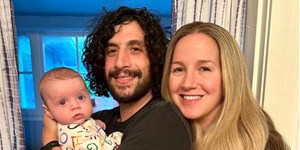Virtual Wilderness Medicine Education: Lessons Learned
Due to the Coronavirus pandemic, schools from elementary to doctorate have shifted standard in-person education to a virtual platform in an effort to maintain social distancing, ultimately limiting the spread of the virus. Unless you’ve been living under a rock, I’m guessing you’ve been impacted by this in some way. This shift has arguably impacted wilderness medicine education more than most other fields of study. Classically, wilderness medicine is taught in an outdoor environment with live scenarios and hands-on skills training. Trying to adapt a traditional wilderness medicine curriculum to a virtual platform is nearly impossible. Because of this, countless educational programs from Wilderness First Aid to Graduate Medical Education courses have been cancelled. However, some courses persisted in modified and often simplified versions using Zoom to bring classmates and instructors together online.
I’ve been running a 4th year medical student elective on Wilderness Medicine for the past 5 years and was tasked by the School of Medicine to continue this course virtually if at all possible. I’m always down for a challenge, but I have to admit, I wasn’t very excited for this one. After all, sitting in front of a screen isn’t my idea of a good time. In all seriousness, it was the interpersonal connections I made with my medical students that made the course particularly special. Without adventures as a class, and chats around a campfire, I knew these would be nearly absent. Not to mention, spending a week each in Rocky Mountain National Park and Moab never hurts the soul. However, as I wrap up my second attempt at running this course virtually, I have to say, I learned more than a few things that can be applicable to all wilderness medical education.
- Homework Videos: There is no question that effective wilderness medicine education is experiential – whether that is being surprised by a moulaged patient or feeling the weight of a patient in a make-shift litter. Clearly, social distancing creates a hindrance to this aspect of learning. However, we were able to find some success requiring our students to submit a homework video of themselves performing these hands-on tasks. Although this is no substitute for live-training, it does ensure students are performing hands on tasks while providing an opportunity to give feedback. Read to the end for some entertainment.
- Personal Projects: Wilderness medicine’s reach is too vast to cover in one course alone. We took one day out of the schedule to give the students the chance to research a topic particularly interesting to them and not already covered in the curriculum. A write-up was required as was a 5-10 minute presentation in which they taught their classmates and instructors what they had learned.
- Flexibility: Since they are about to finish medical school, my students have so many logistical life tasks to consider at the time of the class. An online format is actually very conducive to handling these variables while engaging in new material. As adult learners, I trust they have mastered what learning strategies work for them. Having the ability to watch a lecture at a later time or complete reading on their own can be very helpful.
- Expert Hour: Every afternoon, we hosted a session where a medical professional who practices wilderness medicine discusses details about their career in the context of cases or stories. I find that for people new to the field, it can be hard to understand how people actually practice wilderness medicine. In these sessions, our students were able to learn from SAR leaders, prominent researchers, NASA scientists, expedition docs and professional guides. Not only did the students find these career paths eye-opening, but they also gave context to many of the topics they had learned earlier that day.
- Exam: I never used the exam to potentially fail any students, but rather the last chance to solidify salient take-home points they had learned from the course. Using game-show or trivia apps, it is possible to create an interactive experience where the students can see which questions, not only they, but other classmates are struggling with and the chance to discuss them at the same time. Plus, a little healthy competition allows one student to come out on top and receive accolades from their classmates.
While it feels like we might soon see a time without social distancing and when in-person learning can continue, one never knows what the future holds. I truly hope the next iteration of this course is back in the wild. However, with these lessons learned and more lessons from colleagues, the next virtual course will be the best one yet. After all, if we aren’t able to adapt to the situation, how good can we be at practicing wilderness medicine?
Lastly, check out this homework video of one of my students finding a way of carrying an unconscious victim. Who says a virtual course can’t be fun?!
David Young, MD MS DiMM FAWM
Chair Elect – ACEP WM Section



